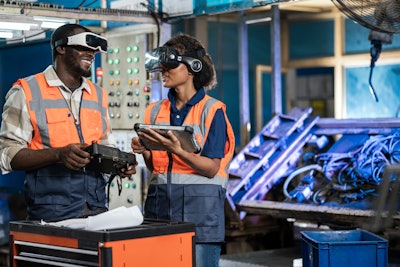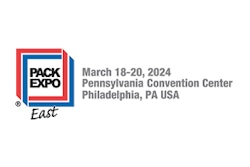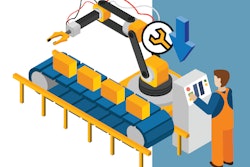The digital revolution in CPG manufacturing is happening now. In today's fast-paced business landscape, consumer packaged goods (CPG) brands are constantly striving to increase worker productivity and manufacturing flexibility to keep up with consumer demands, as well as to stay ahead of the competition.
One way brands are finding success is by automating manual processes and then layering a variety of software applications on top that can contextualize data to gain visibility into what’s happening on the plant floor. As more CPGs tap into these digital technologies, they are transforming traditional facilities into smart plants: efficient, data-driven centers of manufacturing excellence.
CPGs have varieties of digital factory software tools at their fingertips. These serve as a big-picture tool that integrates continuous optimization and fosters a connected worker culture of operational excellence.
Let’s explore 11 tools that are making plants smarter and reshaping the industry for the better.
1. Data Analytics and Data Management Tools
Data is the backbone of any successful digital transformation, and the increasing availability of data is a catalyst to change. But first, CPG brands must be able to pull the correct data out of equipment. Sensors, instrumentation, controllers, and other devices are now generating more data than ever before. And data management tools can be used to sort through and contextualize the data, from which an analytics application can create actionable information—a key element of the next-generation smart plant.
Data analytics and data management tools are essential for making sense of it all. They help businesses identify trends, patterns, and anomalies in their processes. Empowered with this data, brands can make informed decisions in factory digitalization about production planning, scheduling, equipment maintenance and more. For example, a smart food and beverage facility might use real-time data analytics to optimize their production line, reducing downtime and minimizing waste, ultimately leading to increased profitability.
2. Predictive Maintenance
Predictive maintenance has emerged as a game-changer in manufacturing. With machine learning algorithms, manufacturers anticipate equipment failures before they occur. Contingency planning becomes data-based and strategic, allowing for timely maintenance and preventing costly unplanned downtime. For a nutraceutical brand, this might mean improved equipment reliability, ensuring that critical processes are not interrupted, and production remains consistent and compliant with regulatory standards.
3. Track-and-Trace Technologies
In industries where safety and quality are paramount, such as pharmaceuticals and personal care, track-and-trace technologies are already transforming supply chain management. Through digitalization components like RFID tags and sensors, smart manufacturing facilities monitor their products' journey from production to the end consumer. Track-and-trace tools enhance product transparency, mitigates risks of counterfeiting, and facilitates recalls if necessary, boosting consumer trust and brand reputation.
4. Machine Learning and Artificial Intelligence
Machine learning and artificial intelligence (AI) are another major force in factory digitalization. These tools empower facilities by streamlining and speeding up decision-making in CPG manufacturing. AI-driven algorithms can optimize production schedules, adjust settings on process variables, and even predict consumer demand patterns for products. Brands can utilize AI-powered production lines that adapt in real-time to manufacturing complexities, leading to more reliable and efficient output.
5. Cybersecurity and Remote Access
While the application of remote access technologies into machines on the plant floors rose during the COVID-19 pandemic, it continues to expand in the post-pandemic era. These technologies allow engineers and technicians to access and control equipment remotely, which can be helpful for troubleshooting problems, conducting maintenance, and training employees. Brands are adopting remote access factory digitalization tools to supervise multiple manufacturing sites or to give access to an OEM to manage a specific machine. As remote access becomes more prevalent, taking robust cybersecurity measures is vital, which is why remote access and cybersecurity go hand-in-hand. Any manufacturer investing in remote access tools also needs to take steps to protect their data and systems from cyber attacks. (Note: Be sure to sign up for CPG Next's free webinar, Cybesecurity Challenges During Digital Transformation, slated for February 28, 2024.)
6. Asset Lifecycle Management (ALM) Tools
Asset Lifecycle Management (ALM) tools allow smart facilities to take a proactive approach to tracking the performance and maintenance history of equipment assets throughout their lifespan. They have emerged as an effective digitalization tool to help forward-thinking CPGs optimize their assets, by handling tasks like predicting maintenance requirements, optimizing machine replacement cycles, and maximizing asset utilization. A personal care brand could use ALM tools to extend the life of their processing machines in the mid-term, reducing capital expenditures while maintaining high productivity in the short-term.
7. Cloud Services
Cloud services offer scalable and cost-effective solutions for data storage, analysis, and collaboration without impacting onsite resources. CPG brands can leverage cloud-based platforms to centralize data from multiple plants and make it accessible to relevant stakeholders in real-time. This ensures streamlined operations, seamless collaboration, and better decision-making throughout manufacturing and distribution. Food and beverage CPG brands, for example, might use cloud services to connect their production facilities globally, allowing for standardized procedures and continuous improvement across the entire network.
8. Industrial Internet of Things (IIoT)
Industrial Internet of Things, or IIoT technologies are another key tool in the digitalization toolbox. By connecting physical devices and systems to analytics that live on the network edge or in the cloud, IIoT can provide real-time data that can be used to improve efficiency, quality, and safety. One example: IIoT can be used to monitor the performance of machines and equipment, track the movement of materials through the production process, and collect data on product quality. This data can then be used to identify potential problems before they occur, optimize throughput, and improve quality control. IIoT can also help to reduce costs, increase productivity, and enhance safety. As the technology continues to evolve, it will become an even more powerful tool for the digital transformation of CPGs.
9. Simulation and Digital Twins
While different applications, simulation and digital twins offer a virtual playground for testing new ideas and optimizing existing processes for smart o. By creating digital replicas of physical assets or processes, CPG plants can simulate various scenarios, identify potential bottlenecks, and optimize operations before implementing changes in the real world. Manufacturers are already employing digital twins to create a precise replica of the physical assembly lines and use that model to refine the production process, reducing time-to-market for new product launches.
10. Augmented Reality (AR) and Virtual Reality (VR)
Augmented Reality (AR) and Virtual Reality (VR) technology are increasingly being used in training, maintenance, and quality control in many sectors in manufacturing. AR is an interactive experience that combines real world and computer-generated content. Through AR-based training, new employees can receive hands-on experience without the risk of operating real machinery. VR, on the other hand, is a simulated experience that uses a 3D interface to give the user an immersive feel of a virtual world. VR can be used for virtual walk-throughs of manufacturing facilities, allowing managers to identify potential improvements in layout and process flow.
11. Overall Equipment Effectiveness (OEE)
Overall Equipment Effectiveness (OEE) is a critical metric that measures the performance, availability, and quality of manufacturing equipment. Considered an important key performance indicator (KPI) in manufacturing, OEE is used to measure how efficient an asset is during the manufacturing process. Using OEE software, CPGs can pinpoint bottlenecks, improve machine reliability, and enhance overall plant efficiency. For instance, an electronics brand could use data collected and analyzed through OEE software to identify and address recurring equipment failures, resulting in increased throughput, and reduced downtime.
These are just a few of the technologies available to companies embarking on their digital transformation journey. While some CPGs are still in the early stages of adopting factory digitalization tools, others are already seeing a significant impact on their business by adopting smart plant approaches, positioning them to maintain a competitive edge in the years to come.


























